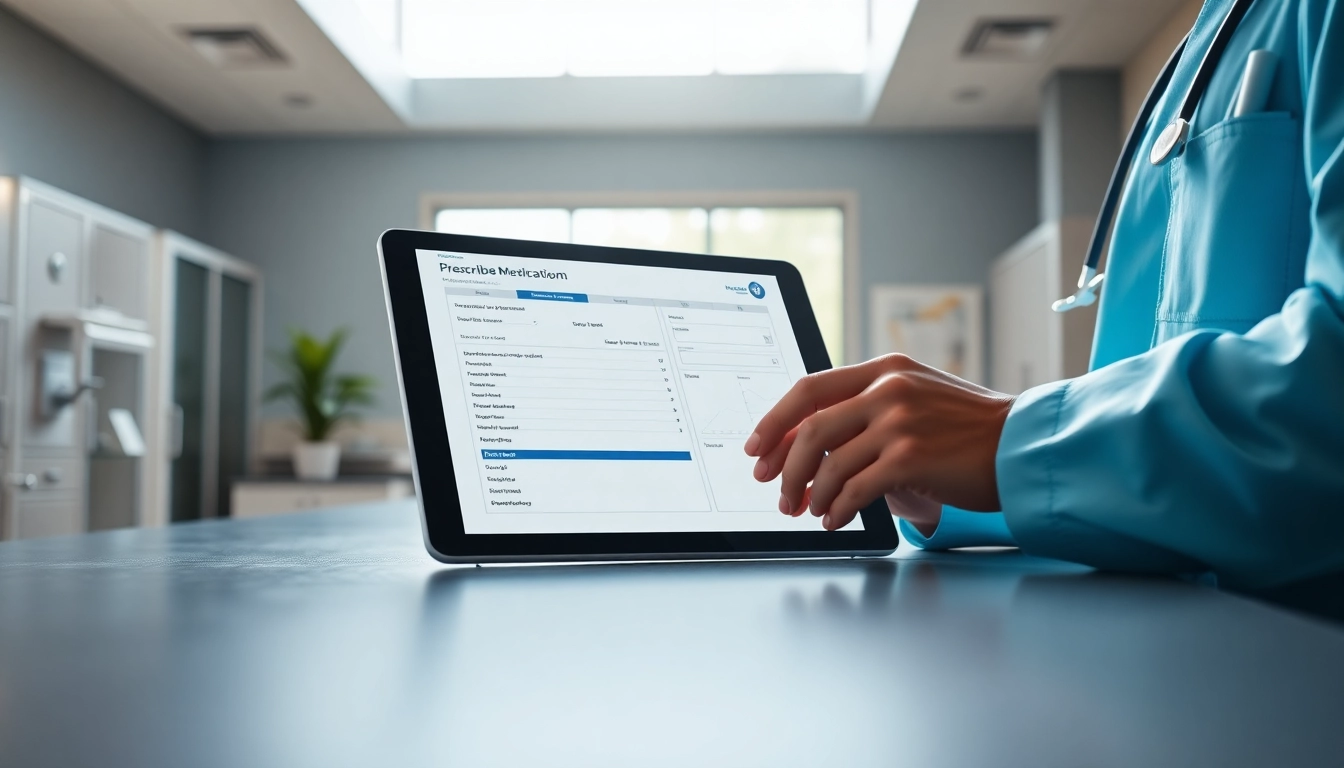
Understanding Eprescribing Software for Doctors
What is Eprescribing Software?
Eprescribing software is a digital solution that allows healthcare providers to prescribe medications electronically instead of using traditional paper prescriptions. This innovative technology facilitates seamless communication between physicians, patients, and pharmacies. By using standardized formats, eprescribing software significantly reduces the chances of errors associated with handwritten prescriptions and enhances the overall prescription management process.
In this digital age, with healthcare increasingly moving towards automation, eprescribing software for doctors is becoming essential for modern medical practices. It not only streamlines the prescribing process but also offers functionalities such as integrating patient histories, checking for drug interactions, and ensuring compliance with various healthcare regulations.
Benefits of Eprescribing Software for Doctors
The adoption of eprescribing software provides numerous benefits for healthcare providers:
- Improved Efficiency: Eprescribing reduces the time spent on writing prescriptions, allowing doctors to dedicate more time to patient care.
- Error Reduction: The risk of misinterpretation is significantly lowered, minimizing medication errors caused by illegible handwriting or incorrect dosages.
- Enhanced Patient Safety: Eprescribing systems often include built-in safety checks that notify prescribers of potential drug interactions or contraindications based on a patient’s medical history.
- Convenience for Patients: Patients benefit from quicker and easier access to their medications, as eprescribing allows for prescriptions to be sent directly to pharmacies.
- Cost Saving: By reducing errors, the need for costly follow-ups and adverse drug events can be minimized, ultimately lowering healthcare costs.
Key Features to Look for in Eprescribing Software
When selecting an eprescribing software solution, consider the following key features:
- User-Friendly Interface: The software should have an intuitive interface to facilitate ease of use for healthcare providers.
- Integration Capabilities: It should seamlessly integrate with existing electronic health record (EHR) systems and pharmacy networks.
- Automatic Drug Interaction Checks: The system should automatically alert prescribers of potential drug interactions.
- Regulatory Compliance: Ensure the software adheres to HIPAA and other regulatory compliance standards.
- Real-Time Prescription Tracking: Features that allow tracking of prescriptions from the point of issuance to pharmacy fulfillment enhance monitoring and accountability.
Implementation Steps for Eprescribing Software
Assessing Your Practice’s Needs
Before committing to an eprescribing solution, it is crucial to assess the specific needs of your practice. Evaluate the volume of prescriptions you generate, the complexity of patient cases, and your current workflow dynamics. Conduct internal surveys among staff to determine pain points and desired features in an eprescribing solution. This initial assessment will guide your selection process and ensure a better fit for your practice.
Selecting the Right Eprescribing Software for Doctors
After assessing your practice’s needs, the next step involves researching available eprescribing options in the market. Consider factors such as cost, customer support, user reviews, and industry reputation. Participation in product demos or free trials can also provide valuable insight into how the software aligns with your workflows. Comparing multiple vendors is essential to ensure that you make an informed decision.
Integrating Software with Existing Systems
Once a decision has been made, the integration of the new eprescribing software with your current healthcare systems is critical. Collaborate closely with IT professionals to ensure that technical integrations are handled smoothly, minimizing disruption to daily operations. Training sessions should be arranged for staff to familiarize them with the new software and provide hands-on experience to enhance efficiency during the transition period.
Enhancing Workflow Efficiency with Eprescribing
Streamlining Prescription Processes
One of the primary advantages of eprescribing is the ability to streamline prescription processes. Automation reduces the steps involved in prescription management, from creation to renewals to refills. Staff members can work more effectively when they are not burdened by administrative tasks associated with paper prescriptions, leading to improved patient satisfaction and higher throughput.
Reducing Errors and Improving Patient Safety
The implementation of eprescribing software significantly enhances patient safety by reducing medication errors. Systems that provide automated alerts for potential risks like drug allergies or duplicate therapies are essential. Leveraging such advanced features not only optimizes clinical decision-making but also fosters trust between patients and healthcare providers, as patients can be assured of their safety during their treatment journeys.
Training Staff for Optimal Usage
To maximize the benefits of eprescribing software, thorough training is essential. Organize workshops and hands-on training sessions to equip all staff members with the skills needed to navigate the software proficiently. Continuous education and training updates should also be part of the practice culture to keep everyone engaged in using the system optimally. A well-trained staff will contribute to seamless operations and enhance overall productivity.
Regulatory Compliance and Security Considerations
Understanding HIPAA Regulations
Healthcare providers must be familiar with HIPAA regulations when implementing eprescribing software. This federal law governs the privacy and security of health information, and compliance is essential to protect patient data and avoid penalties. Ensure that any chosen software complies with these regulations by evaluating vendors’ security protocols and data encryption measures.
Data Security Protocols for Eprescribing
Data security is paramount when using eprescribing software. Providers should look for software vendors that implement stringent security measures, such as encryption, two-factor authentication, and regular security audits. Additionally, practices should develop their own security protocols for accessing patient data and regularly educate staff on cybersecurity best practices to mitigate risks of data breaches.
Ensuring Compliance with State Regulations
Each state has its own regulations regarding the prescribing of medications and the use of electronic prescribing. Understanding these requirements is crucial for compliance and avoiding legal complications. Regularly reviewing state mandates and updating operational practices to align with these regulations ensures that your practice remains compliant and operates within the legal framework.
Measuring the Success of Eprescribing Software
Key Performance Indicators for Eprescribing Software
To measure the success of eprescribing software implementation, it is important to establish clear metrics. Consider tracking key performance indicators (KPIs) such as:
- Prescription Processing Time: Measure the time taken to process prescriptions before and after implementation.
- Error Rates: Monitor the rate of errors reported pre- and post-implementation to assess improvement.
- Patient Satisfaction Scores: Regularly survey patients to gauge their satisfaction with the prescribing process.
Gathering Feedback from Users
Collecting feedback from users, including physicians and support staff, is essential for evaluating the efficiency of the eprescribing software. Engage in regular discussions and surveys to gather insights on user experience, identify pain points, and gather suggestions for improvement. This feedback loop creates an environment of continuous improvement geared towards enhancing usability and operational efficiency.
Continuous Improvement Strategies
To ensure ongoing success with eprescribing software, practices should commit to continuous improvement strategies. Regularly review performance metrics, analyze feedback, and stay informed on advancements in technology related to eprescribing. Being proactive in seeking enhancements and updates will ensure your practice remains at the forefront of efficient medication management and patient care delivery.







